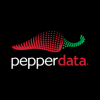Big Data Cloud Performance Monitoring In The Cloud: Best Practices
Monitoring big data cloud performance in the cloud with unified visibility across the entire ecosystem is critical to the success of any cloud deployment.
Learn why Enterprise clients use Pepperdata products and Services: https://www.pepperdata.com/
#bigdatacloudperformance #bigdatacloudmonitoring #pepperdata
In both the data center and cloud deployments, a proliferation of diverse performance solutions and microservice applications across infrastructures and networks can severely complicate cluster performance management. Hidden network dependencies and the complexity of managing many different solutions can negatively impact the application experience for both internal and external users.
In this webinar, learn how you can gain visibility into cloud deployments, accelerate your cloud adoption, streamline IT operations, and deliver great customer experiences.
By watching, you’ll learn how to:
- Implement unified visibility.
- Monitor the health of all your hosts, containers, and apps within one place.
- Drill down into the stack, any app, anywhere, at scale.
- Surface issues with infrastructure observability.
- Reduce waste and cost.
- Enhance operational efficiency.
- Improve application reliability to collaborate across multiple cloud providers and stakeholders.
More on the episode:
We've got Big Data Cloud Performance Monitoring: Best Practices, which is a big topic, but we're going to sort of boil it down to a couple of big ideas, here, the what and the why. So, when we're talking about big data performance monitoring best practices, there really is a need for, at a very high level, the automated unified visibility so that, you know, an automated way to give you eyes on and observability into everything that's happening across your architecture.
Whether that be, you know, a single vendor cloud, multi-cloud hybrid cloud, what have you. You really need a way to monitor the health of the hardware, the users, containers, and applications, and really the business goals that you're looking to drive with these platforms. And, you'll want to be able to drill down into that stack and look at any app, anywhere at scale.
So, we'll talk about the complexities that the cloud throws at you, which makes some of those things really tough. And then, the idea that you need to leverage automation is really going to be key to being successful. When you're looking to deploy this unified pane of glass, visibility. The why really is so that you can reduce costs and waste. And there's a number of ways that you go about doing that.
But, job one is just knowing what's driving the cost throughout the platform and having the answers to the questions, as to, you know, is what I've deployed working, and things like that. And you know, who's driving costs? Where is my money best spent as I'm looking to, you know, morph this architecture going forward? And then, eliminating waste with smart automation and improving the ability to deliver business while containing costs.
These platforms all have a business purpose at the end of the day. So, the goal here is to make sure that you're running these platforms in a way that serves the business. Ultimately, the challenges that you'll face are going to be in the realms of sprawl, complexity, and cost control.
So, big data has a lot of moving parts. They overlap. They're sprawling interdependencies. So how do you measure performance and the overall success of these components? Are the cloud providers giving you the data you need to make these smart decisions? And then, is the right automation supported throughout your architecture? And then finally, you know, are costs translating to business value as we talked about? The data really that we're talking about here is performance data, and event data, and log data.
All of these things are sort of the metadata about the applications and about the platforms that you need to be able to answer questions. So, what you need really is not more data. You need a platform that will synthesize this data and provide you with the answers and solutions to the problems that pop up. One of the approaches that we take with Pepperdata is to take a look at the industry as a whole and periodically do surveys of experts in the industry...
Learn why Enterprise clients use Pepperdata products and Services - https://www.pepperdata.com/
Check out our blog: https://www.pepperdata.com/blog/
/////////////////////////////////////////////////////////////////////////////////////////
Connect with us:
Visit Pepperdata Website: https://www.pepperdata.com/
Follow Pepperdata on LinkedIn: https://www.linkedin.com/company/pepperdata
Follow Pepperdata on Twitter: https://twitter.com/pepperdata
Like Pepperdata on Facebook: https://www.facebook.com/pepperdata/

